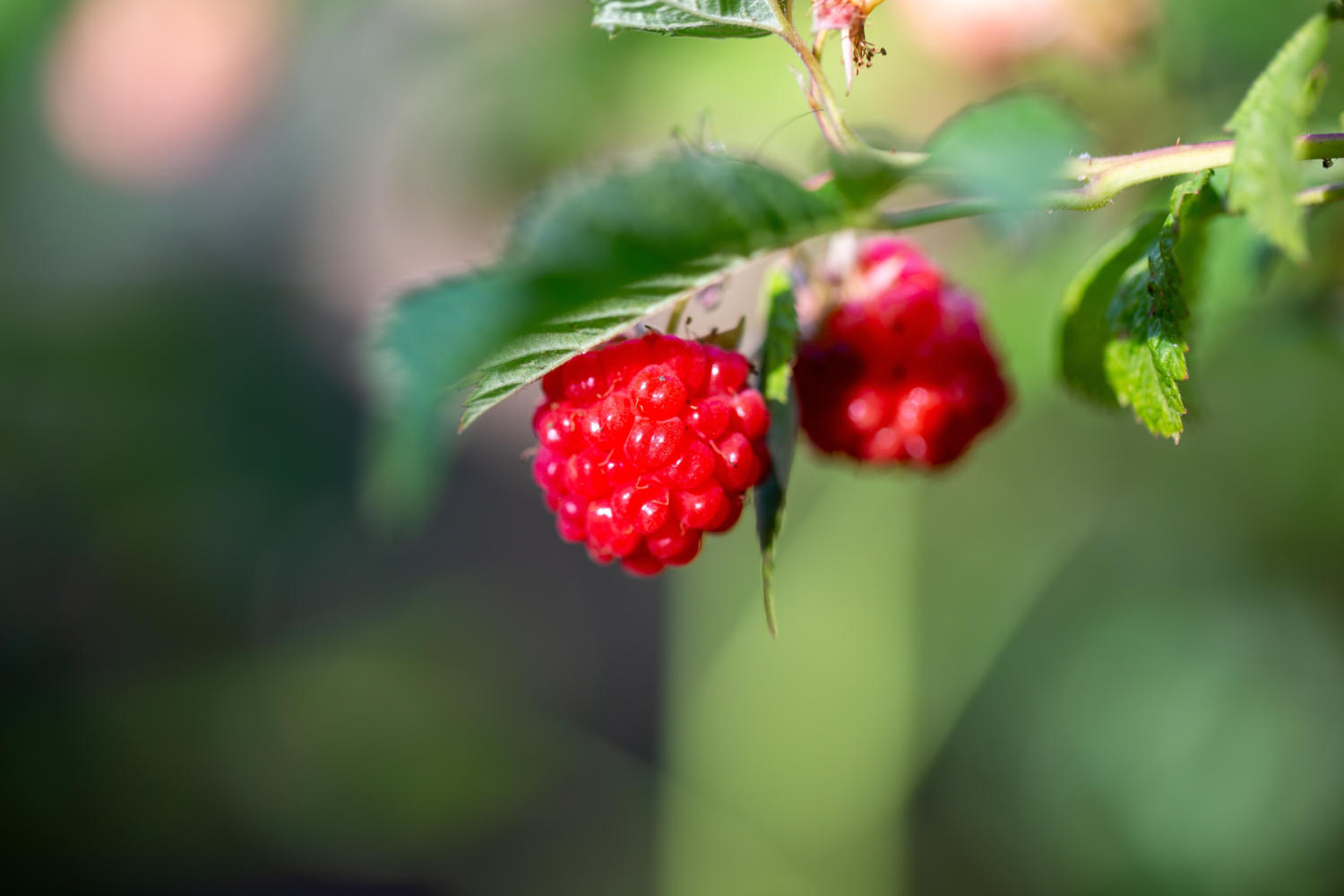By Tony Chalcraft

One of the advantages of raspberries, compared to other soft fruits (horticultural speak for berries), is that they can be harvested over a long season. Unlike blackcurrants, which are ready from late June to early August, or gooseberries, which, are usually all done by the end of summer, raspberries can be harvested fresh from June until well into autumn. Even strawberries don’t have this staying power. If grown in the garden, Strawberries peak in mid-June to early July. Commercial growers may extend the season through the use of polytunnels and other horticultural trickery plus and of course, there are imports from warmer climes; but in a fair fight traditional seasonal strawberries are easily outlasted by raspberries.
The reason raspberries have a longer season is that there are two types with different cropping periods. The traditional and still more commonly grown raspberry is the ‘summer fruiter’ that crops from late June to mid-August. There are numerous varieties of this type, often prefixed Glen or Malling. Summer fruiters produce an abundance of berries over a relatively short period of three to four weeks. This means, if raspberries are in high-demand through the summer, several varieties are needed to ensure continuous berry production. Autumn fruiting raspberries, however, have a different habit. Known technically as ‘primocane’ varieties, they produce berries on canes made the same season. Summer types, in contrast, carry their berries on canes made the previous year. When it comes to the cropping, unlike their summer cousins, autumn fruiters don’t have a peak of berry production which rapidly tails off. There’s no glut and bust: autumn fruiters produce modest but sustained pickings from August through to October.
The most common autumn fruiting raspberry is the long established variety Autumn Bliss. Indeed, for many years this was the only one available for domestic growers apart from the yellow berried, and in my experience weak growing, novelty variety: All Gold. Recently several new types have been developed, notably, Polka and Joan J. I’ve grown both of these for several seasons now and found them to be superior to Autumn Bliss. Berry size is better and the canes more robust. If you grow Autumn Bliss therefore, you may wish to consider giving these new types a try, especially if the old canes are ailing, as they tend to do after ten or more years of cropping.
If you want to grow raspberries but only have space for one type it may be worth going for the autumn types in preference to the summer croppers. In addition to the longer fruiting period, they’re generally easier to manage. Pruning is simple. As the fruit is carried on new canes, the old ones are simply cut out completely, that is to ground level, in late winter. This also means minimal supporting paraphernalia is required. All that’s really necessary, assuming the canes are grown in a row, is to keep them from sprawling as they grow through the summer with strong string strung from posts. Another advantage of autumn fruiters, compared to summer types, is that they are not usually taken by birds. Except after heavy bouts of rain the berries also seem less susceptible to moulds.
There’s a lot to be said for autumn fruiting raspberries. It’s a bonus to have raspberries fresh from the plot well in autumn. They even outlast the blackberries, the berries most often associated with the season of mellow fruitfulness, continuing to give quality pickings well into October and sometimes beyond if the weather is kind.











Add a comment